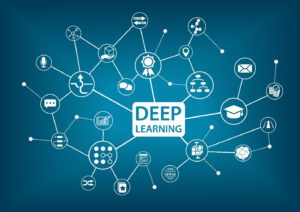
- Products
- Solutions
- Learn
- Partner
- Try Now
Artificial Intelligence has a transformational impact in the space of business and has achieved superhuman performance across the board. The spark of AI revolution is finally dazzling and flood of data is unlocking its power.
The Machine Learning solution is not new. They date back to 1950s and most of the algorithmic breakthrough occurred between 1980s and 1990s. Then why is it invoking curiosity now? Why did Harvard Business Review call Data Scientist as ‘Sexiest job of the 21st century’? Reason behind is that we finally harnessed vast computational power and enormous storehouses of data (video, images, audio and text files) which eventually makes neural nets perform better than ever before. Sophisticated algorithms with astonishing accuracy and broader investment are fostering AI advancements. The substantial progress has sparked a burst of technological enhancements.
As innovations are emanating from multiple directions, many companies and research universities are stepping into the calescent AI world. On the contrary, there are also many companies who are struggling to benefit from pivotal analytics, while some are yet to even dip their toes into data lake itself. Top notch companies are delivering significant margin growth by implementing analytics and Artificial Intelligence wisely to expand their frontier of business value creation.
The Groundbreaking Deep Learning
Deep Learning, a fiercely competitive arena in Artificial Intelligence is nowadays becoming more crowded battlefield.

Most recently, a new type of neural network is introduced called Capsules and to train such network, an algorithm dynamic routing between capsules is derived. This boomed the AI community, who are engaged with today’s workhorse of deep learning – Convolutional Neural Network (CNN). The learning of the capsule approach to achieve the state-of-the-art performance requires just a fraction of data that a Convolutional Neural Network uses.
AI machines that are beating human experts use techniques ranging from the statistical technique- Bayesian inference to deductive reasoning to deep learning. Deep learning excels at problems involving unsupervised learning. Generative Adversarial Network (GAN) is the cutting edge of deep learning research. GAN, a new architecture of unsupervised neural network contain two independent neural nets (discriminator and generator) that works separately and act as adversaries. They solve problems like image generation from descriptions, predicting which drug treats particular disease and retrieving images that contain a given pattern.
Openness of research community are beginning to emerge. Deep learning breakthroughs incorporate ideas from statistical learning, reinforcement learning and numerical optimisation. This is going to be the era where AI will be democratised.
Fusion of Deep Learning platforms with Big Data platforms
Big data met its match! Big data platforms – Hadoop and Spark remain the backbone for most of the analytic applications.
Now, deep learning workloads coexist with other analytics workloads to leverage real time data pipeline and monitoring frameworks within platform. Tensorflow and Spark are integrated to upgrade deep learning pipelines. Spark is used to select hyper-parameters for training deep learning algorithms that leads to 10x training time reduction and 25% lower error rate. As Spark can orchestrate multiple host threads, it allows models to be deployed at scale.
With unprecedented growth of data, scalable parallel algorithms for training deep models is imperative. A new deep architecture, Tensor Deep Stacking Network (T-DSN) is implemented using CPU clusters for scalable parallel computing. Thereafter, Deep Belief Network (DBN), a GPU based framework is introduced to parallelise unsupervised learning models. To leverage cluster of machines to manage both data and model parallelism, a software framework DistBelief is recently designed for distributed training and learning in deep networks.
Distributed data processing frameworks have widespread adoption and triumph. The disruptive impact of big data is driving the continuing innovation of deep learning.
Real World Use Cases
The wave of deep learning use cases are expanding rapidly. Diverse domains are stepping up to unleash the power of data science.

Taking an instance, spotting invasive brain cancer cells during surgery becomes difficult due to effects of operating-room lighting. Conjunction of neural networks and spectroscopy during operations allows us to detect cancerous cells easily, thereby reducing residual cancer post operation.
Long-short-term memory (LSTM), a class of Recurrent Neural Network (RNN) are capable of machine translation, language modelling, question answering and image generation. Deep learning provides an exceptional boost to Natural language processing in various key areas.
Natural Language Processing with Machine Vision makes it possible to recognise and label objects in real life. Applications like named-entity recognition or speech-to-text and object recognition are researching fields in this realm. For feature introspection, ensembling deep nets with machine learning algorithm allows to vote and rely on each for its strength.
The New Electricity: Artificial Intelligence is already amplifying the supply chain industry. Its transforming sales and operation planning (S&OP) with faster decision cycles. Probabilistic forecasts provides a new way to look at the future. It’s magnifying rapidly to purge the traditional rule based approach. One of the highest returning use case is predictive maintenance. By survival analysis and anomaly detection, deep learning algorithm predicts when a machine will fail. Machine learning optimizes supply chain performance and drastically improves operational efficiencies.
Companies need to look at potential scenarios and applications to build approach around these findings. It is paramount to start harvesting precious insights from massive amount of data.
Are you ready to capture value of the oncoming wave of Data Science?
Taking few cases into account, estimated arrival time (ETA) prediction resulted in augmenting customer experience and reducing order/ride cancellation by 7%. Internal and external data sources are featured as inputs to machine learning models. In retail, we apply AI for customer churn prediction and cross-selling using association rule mining. With accurate demand forecasting, retailers are able to determine optimal stock levels; that reduces out-of-stock rate by 80% and increases gross-margin by 9%. In addition, we segment the customers based on recency, frequency and use monetary (RFM) models to align marketing campaigns accordingly.
KATO is actively pushing its boundaries of Data Science and reimagining the variety and complexity of problems that can be solved. We demonstrated our expertise by solving some toughest problem industries and organisations facing today. KATO helped numerous clients using machine learning to solve their business problems. Early adopters of artificial intelligence are now reaping range of its benefits. KATO provides promising AI solutions to companies new to the space.
Subscribe to stay ahead with the latest updates and entrepreneurial insights!

Subscribe to our newsletter
Get access to the latest industry & product insights.





















